4 competent schemes for connecting a single-phase RCD
It is best to mount the product after an electric meter, but in front of the machine.
To your attention there are 4 typical schemes for connecting an RCD in a single-phase network.
Connection of one common AVDT:
Installation diagram of several residual current circuit breakers per group:
Connection of several residual current circuit breakers together with an introductory circuit breaker:
Installation in a two-wire network (without grounding):
Please note that you need to connect the device from above, the last picture is provided only for illustration purposes, so that you understand how an RCD is mounted in a network without a grounding conductor. Also pay attention to the fact that each of the options has the following sequence of connecting elements: input automatic machine - counter - RCD. Such a schemeRCD connection maximally protects your wiring from all types of threats.
I also wanted to provide you with a couple of recommendations on the preparation of this scheme:
- If the wiring in a private house or apartment will include more than one powerful electrical appliance, it is better to install a separate residual current device for each group of conductors. This option will allow you to control each device separately and, in turn, in the event of a malfunction, turn off the electricity not in the entire power supply network, but only in a certain place.
- If the power grid is simple, without powerful household appliances, it is better to use installation of the difavtomat. This device simultaneously protects the network not only from leakage currents, but also against short-circuit along with overloads (AB functions).
In the video below, the provided installation options for the differential current circuit breaker are clearly considered, and it also explains where each of the connection methods is rational:
That's all I wanted to tell about the RCD connection schemes in a single-phase network with grounding and without the so-called "ground". We hope that these projects were useful and understandable for you!
Also read:

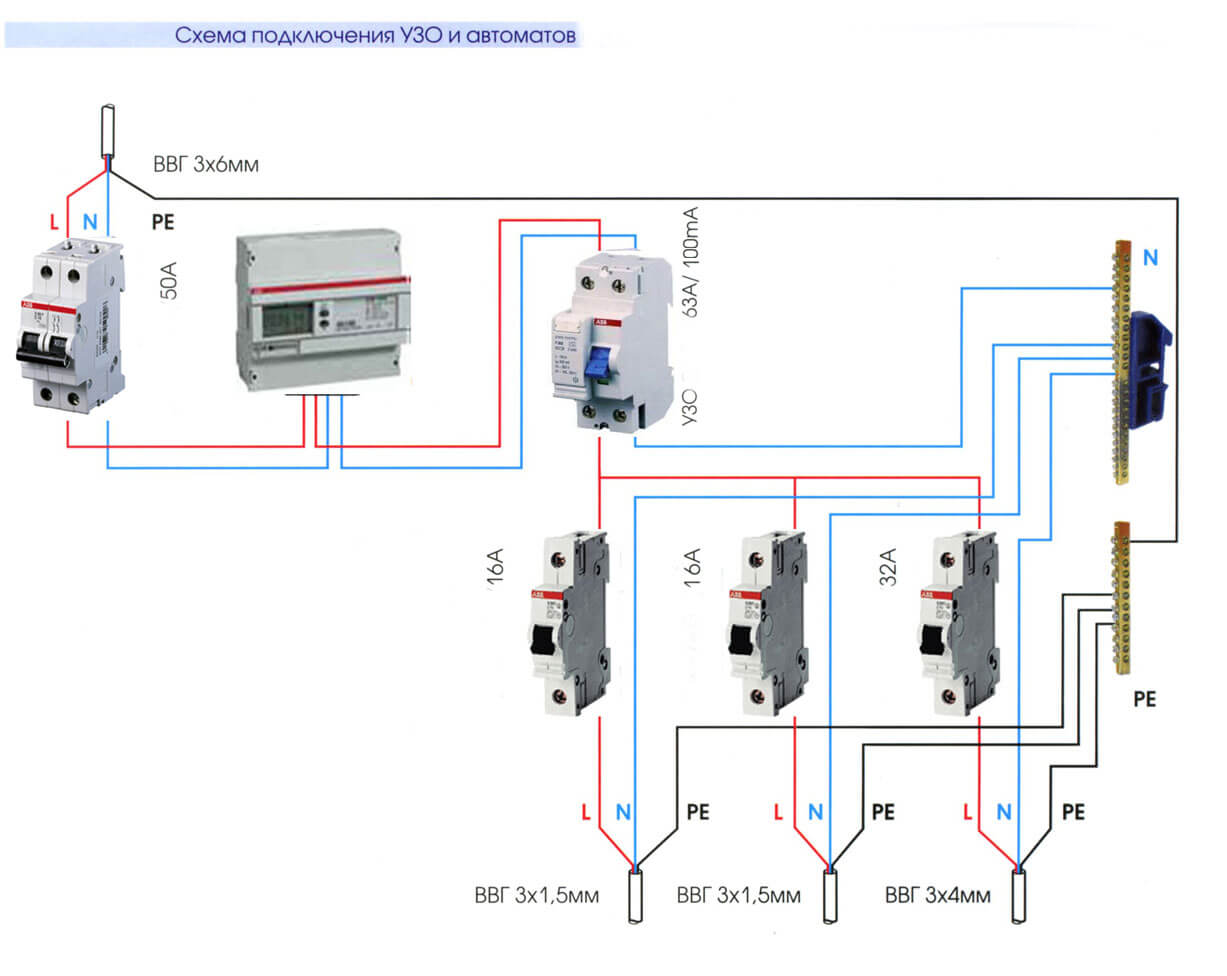
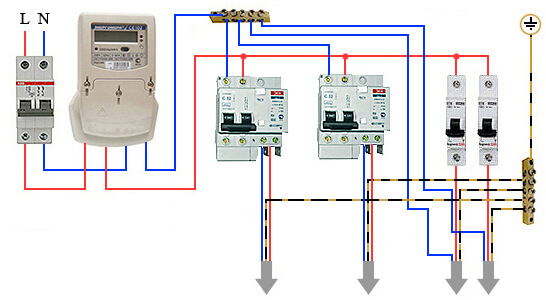
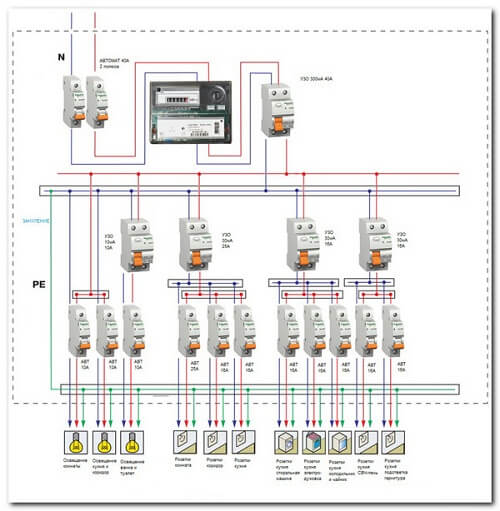
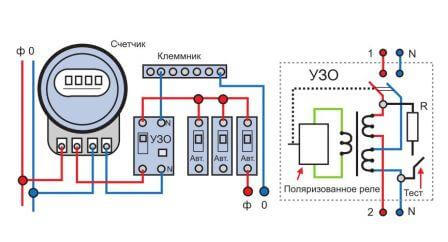


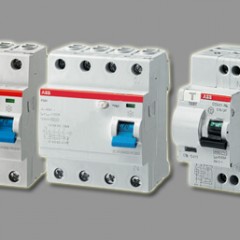
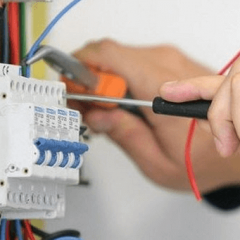
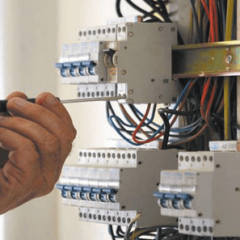

Hello. Tell me, on the 1st diagram, “zero” is connected to the RCD (from the bottom, that is, with “EXIT”?) From the account
chika.A ON OTHER CIRCUITS "TOP" to the "ENTRANCE" of the UZO. Is that INDIFFERENCE ??
In general, yes, it makes no difference, but it is still recommended even by the manufacturer to connect the input wires from above.
An RCD in the network with the TN-C grounding system is PROHIBITED to install! Do not confuse people!
Alexei, do not confuse people yourself.
You can, and even need to use differential protection in the TN-C system !.Only you need to do it right - divide PEN by N and PE before the splitter (before the RCD / difavtomat).
1.7.80 PUE 7izd
... .. If it is necessary to use an RCD to protect individual power consumers receiving power from the TN-C system, the protective PE conductor of the power receiver must be connected to the PEN conductor of the circuit supplying the power receiver to the protective switching device. ”
I didn’t write that comment, but also Aleksey) The fact is that you are absolutely right, in fact it is a zero, but zero is taken BEFORE the RCD, i.e. provides differential protection operation. But in fact, a higher-level automaton may already work here.
Good day tell me. RCD costs 10 mA for light and 30 mA for sockets. for some reason, when a relatively powerful load is switched on sharply (a drill, a grinder (600 watts, or a bathtub with a 1 kW hydromassage), it knocks out the Uzo at 10 mA, which is standing in the light. What could be the reason ?? RCDs are in parallel. Maybe you need to replace the RCD with a larger current ??
https://my.electricianexp.com/en/20-nedopustimyx-oshibok-pri-montazhe-elektroprovodki.html look here video
The necessary material plus maybe your job.
Good afternoon! On the occasion of the expiry of the electric meter’s termination, they made a replacement, immediately after the replacement, the ouzo was cut off, the electrician connected in exactly the same way as the previous one, he turned, turned, tested, could not, as a result, due to the shortening of the wire, the first machine put upside down, (see photo) it was slightly burnt, cleaned, then changed to a new one and set it correctly, but the ouzo does not work (((((disabled (((((counter really accepted.
So what to do? Why doesn’t he keep it close? Electrician Homeowners Association.
I'm certainly not an electrician
But on a wire 3x4 automatic 32A is not put!
The wire will burn before the machine trips
I agree, it is better to put 25A, but the circuit is not provided for this.
Vitaliy, Copper cable (not wire) 3x4 mm.kv. (GOST) LONGLY maintains 38A, so that the rating of the machine at 32A (when viewed with respect to the conductor cross-section) is selected correctly, but its B, C, D, K, Z characteristic and short circuit current affect the time of disconnection from a short circuit, which the "substation" provides.
What do you think the electrician with the housing department will change the wires? What were the wires and connected. Changed the counter, the machine and everything, bye.